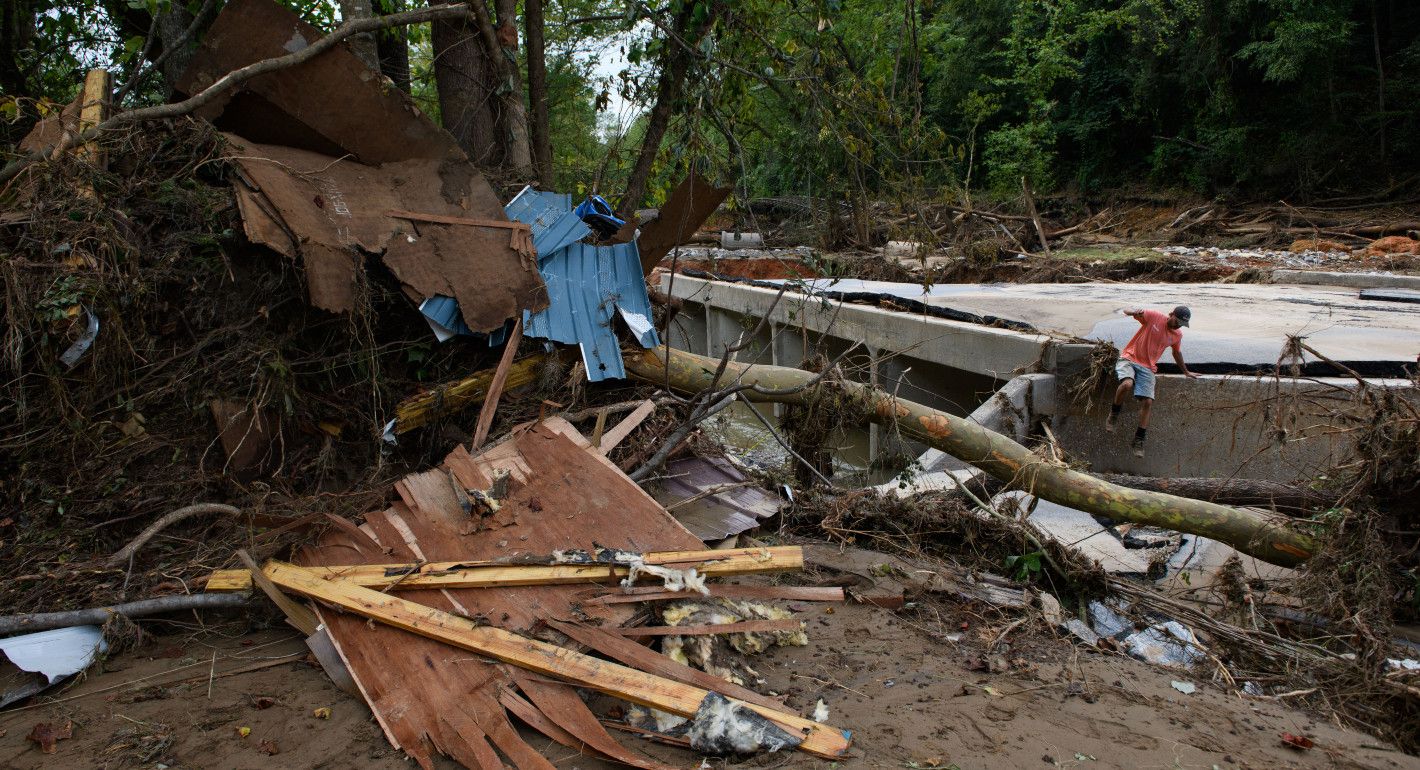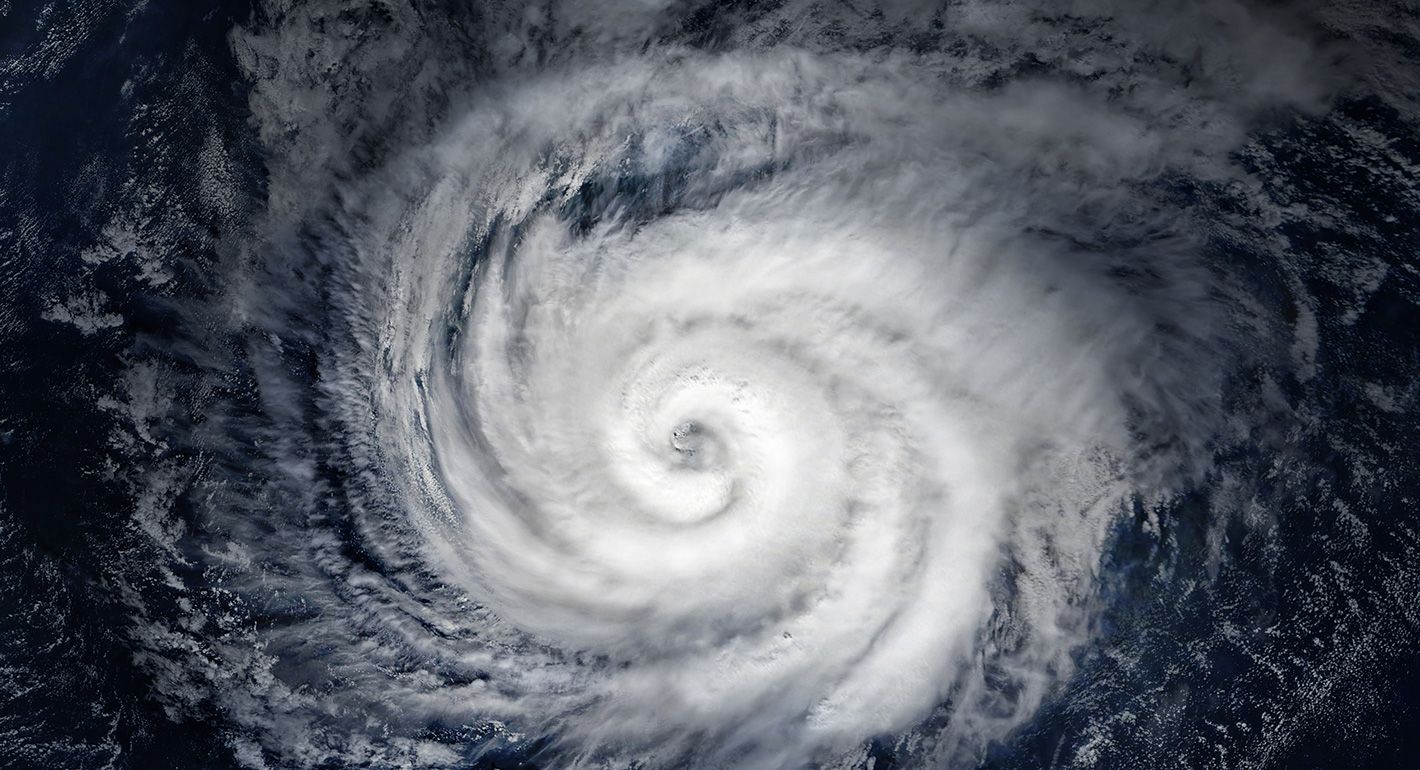The devastation that spans much of the southeastern United States, especially in North Carolina and the wider Appalachian region, in the wake of Hurricane Helene is difficult to comprehend. Millions remain without water, electricity, and cell service, and others are cut off from their communities by impassable roads. The damage or total loss of bridges, roads, homes, schools, restaurants, shops, and more will require billions in aid and years of recovery. The days after a disaster are a strange combination of urgent, shared purpose in helping neighbors and traumatic shock over the magnitude of loss, with little room for imagination about what’s to come.
I know because I live in the deeply disaster-affected city of Houston. I also study disasters. In August, I published the Disaster Dollar Database, which examined 190 U.S.-based disasters since 2015 and the flow of federal resources for recovery. Analyzing these incidents provides historical context for what recovery from Helene will look like, and a cautionary tale about the availability of federal funding for the scale of recovery that will be required.
The United States has a lot of disasters—more than any other country in the world. Recovery assistance occurs through a mix of sources such as insurance payments, charitable donations, and government spending. Large amounts of federal funding flow to state and local jurisdictions, as well as individuals, nonprofits, and businesses. According to our research, the two largest agencies involved in disaster recovery—the Federal Emergency Management Agency (FEMA) and the Department of Housing and Urban Development (HUD)—have distributed about $114 billion in recovery spending since 2015, when accounting only for the biggest disasters. About $12 billion of that total went to individuals and households.
The availability of federal funding seems like it should be good news for survivors of Hurricane Helene, but the disaster recovery system is cracking under the strain of more frequent and devastating disasters and the reality of a divided Congress that is struggling to fund the federal government at all.
In the past, states like North Carolina have relied on FEMA’s Disaster Relief Fund (DRF) to help survivors recover when storms hit. The DRF is intended to promptly fund temporary housing, debris removal, housing repair, and other post-disaster needs. According to our research, roughly 223,000 North Carolina households applied for this type of assistance in the past decade and each received an average of $4,169—about $1,500 lower than the average across all disasters we studied. (The reason for the discrepancy isn’t clear, but we’re digging into the policies and data to deepen our understanding of what a more predictable disaster recovery system would look like.)
This hurricane season has seen huge spikes in the number of FEMA applications. More than a million households applied for assistance after Hurricane Beryl hit Houston in July 2024, dwarfing the application numbers from 2017’s Hurricane Harvey. Disaster survivors across the country regularly say that FEMA bureaucracy isn’t moving fast enough, and our research shows that the entire federal system can take years to deliver promised aid. The FEMA administrator said on Monday that 1,200 federal workers are now on the ground in the region, but the destruction spans more than 600 miles, and Helene likely will join Harvey as one of the most devastating and expensive disasters in U.S. history.
But FEMA is financially unprepared to meet the need. Just last week, Congress declined to appropriate funding for the DRF in the short-term budget. Breaking with past practice, Congress left FEMA to draw on its overall budget for the new fiscal year to fund the DRF—even as members went home two days early because of the threat of Helene. “Spending down next year’s funds early, especially as we deal with more catastrophic weather, threatens to create a perfect storm by our next funding deadline,” noted Democratic Senator Peter Welch of Vermont.
FEMA’s assistance to disaster survivors is just one piece of the larger disaster recovery puzzle. Insurance is a big part of any recovery, even as it gets so expensive as to be out of reach for many households—or simply unavailable. But unlike coastal residents, most people in the inland areas hit by Helene didn’t carry flood insurance.
Even with FEMA assistance and insurance payouts, disaster-affected communities typically fall short of rebuilding enough homes to meet affordable housing needs. And well before the storm, the region affected by Helene suffered from a lack of affordable housing. To bridge this gap, Congress has historically made major emergency appropriations through HUD to state and local jurisdictions to support households that may not have enough resources to rebuild.
But Congress hasn’t made a single disaster recovery appropriation to HUD since May of 2023. No place that has been hit hard by disasters since then—in the Hawaii wildfires, the Vermont floods, or recent hurricanes in Florida and Texas—has received congressional funding to rebuild affordable housing, which tends to be located in areas vulnerable to flooding.
Disaster recovery in the United States has always been far from perfect. Although FEMA and other federal efforts can be a lifeline, the benefits are nowhere near enough to encourage households to rebuild differently or elsewhere. One study showed that FEMA funding widens the racial wealth gap. The Disaster Dollar Database showed that funding levels through both FEMA and HUD are wildly unpredictable across states and take much too long to get to the affected communities. On top of that, we’re seeing historic strain on the disaster recovery system caused by a combination of more frequent and severe incidents and a Congress that can’t agree to fund the mechanisms for recovery that it has used for four decades.
Survivors of Helene deserve better. As communities emerge from the fog of rescuing neighbors and picking through the debris of flooded homes, they will turn to the long, hard work of reimagining what the future holds in an era of increasing climate shocks. They will need to make tough choices about how and where to rebuild, and they’ll need federal help to make it happen. In the face of historic congressional dysfunction, it’s time to reckon with a changed landscape for disaster recovery and the need for much better proactive planning and funding for the climate future that’s already here. This disaster should shock policymakers at all levels of government into action to prepare for the next one.
Emissary
The latest from Carnegie scholars on the world’s most pressing challenges, delivered to your inbox.



.jpg)


